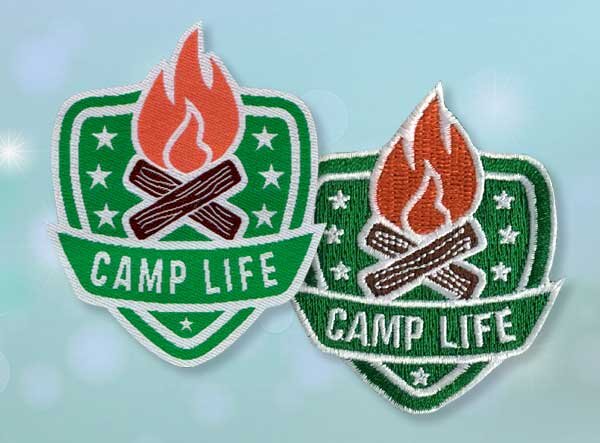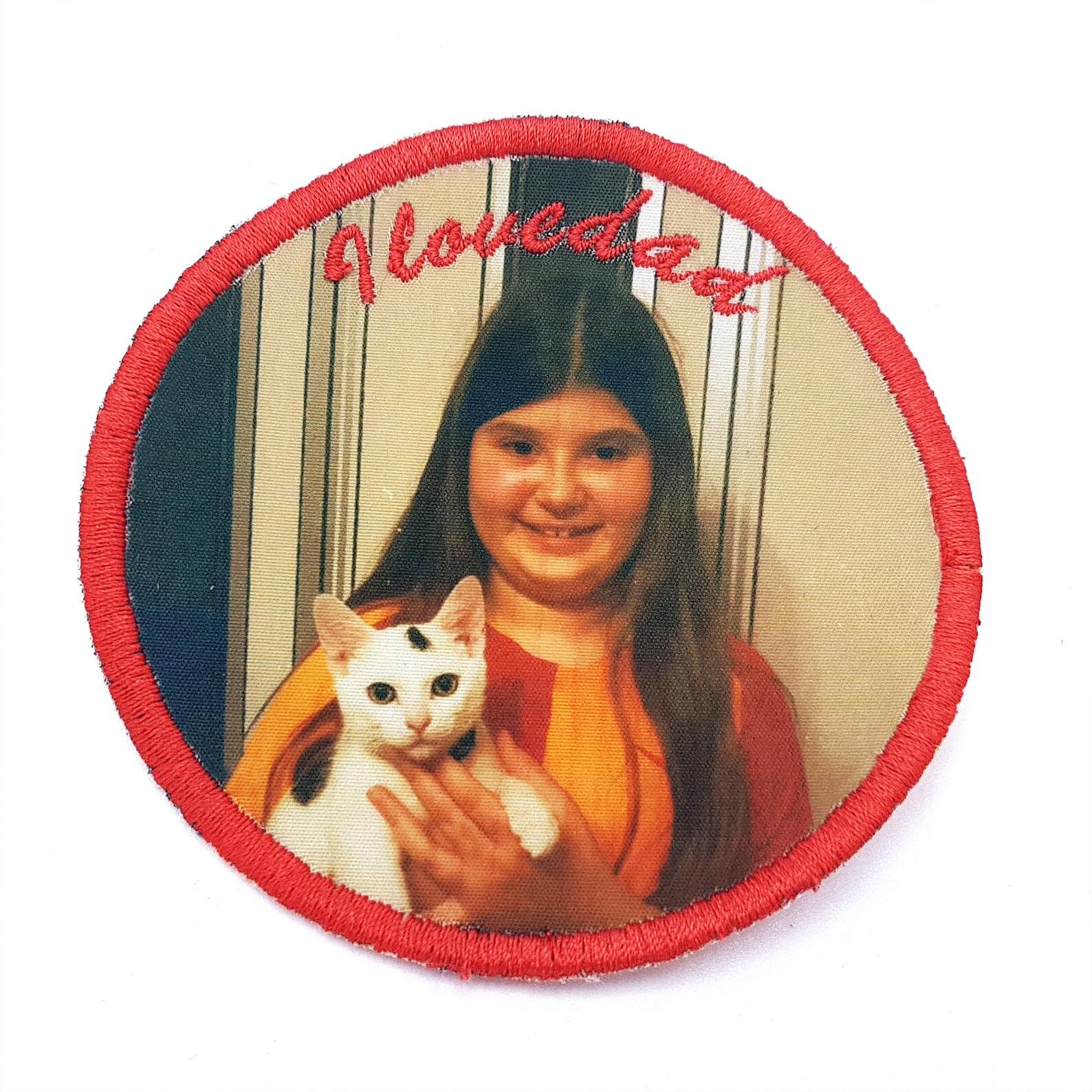Embroidered Patch vs Woven Patch vs Printed Patch
So, you have decided to get custom patches for your brand. But you are unsure whether to pick embroidered patches or to go for woven ones or printed ones.
We present 6 key differences between embroidered patches, woven patches and printed patches. This will help you make the most apt choice based on your brand requirements.
#1 Thread Thickness
Both embroidered and woven patches are created using durable, colorful threads. However, the difference lies in the thickness of the thread used.
Custom Woven Patch vs Embroidered Patch: The thread is thicker in the embroidered patch.
Image via Woven Patches
Embroidered Patches:
For embroidered patches, a thicker style of thread is used, which is stitched onto a base fabric. This gives the embroidered patch a unique dimension, thickness and a classic look.
Woven Patches:
Woven patches are created with thinner thread, “without a base fabric” to give it a smooth, flattened look.
Printed Patches:
Printed patches involve printing a photograph, design or text on twill fabric using a process called dye sublimation. Instead of using threads, the digital artwork is heat-transferred onto the patch.
#2 Design and Text Clarity
Embroidered Patches:
Thicker threads in embroidered patches capture less design details as compared to the thinner threads (which allow a tighter weave) in woven patches. If you need to add text in your design, the font has to be preferably in capital font in larger size for visibility in an embroidered patch.
Woven Patches:
Fine design details can be recreated easily in a woven patch, and in a smaller space if needed. In a woven patch, lower case lettering, script lettering can be captured with text size being smaller than in an embroidered patch.
Printed Patches:
These patches can incorporate multiple colors, highly detailed designs and text. This is the patch to choose, if you want to recreate a landscape, image of your brand logo or a photograph.
#3 Patch Texture
Woven Patches have a smooth, flat look. The design ‘pops’ out in an embroidered patch.
Image via Made by Cooper
Embroidered Patches:
Have a textured feel and the design ‘pops’ out of the patch, giving it a unique 3D feel. Also, as the patch uses thicker thread, the patch feels thicker.
Woven Patches:
Use thinner threads that are woven densely together, giving a smooth, non-raised texture. The threads provide cleaner lines with an appearance closer to a printed look. The thickness of the patch is streamlined and thin.
Printed Patches:
This patch has a smooth, flat and clean appearance.
#4 Colour Gradient
Blending effect can be achieved in an embroidery patch by overlaying threads. Colour gradient can be created in a woven patch.
Image via Woven Patches
Embroidered Patches:
You can get a blending effect in an embroidered patch by overlaying threads in multiple levels.
Woven Patches:
An illusion of colour gradient can be created in a woven patch by concentrating different shades of similar coloured threads in small areas.
Printed Patches:
Any details and colour gradients can be easily recreated on printed patches using heat transfer dye sublimation process. These patches give the nearest replication to a photograph, a landscape and any complex design/image.
#5 Durability/Fade proof
Embroidered Patches:
Since an embroidered patch uses thick threads on a twill background fabric base, it has more durability. These threads can hold up numerous wash cycles.
Woven Patches:
Woven patches use thinner threads woven together without an anchoring base fabric. They are less durable than embroidered patches. These patches can also hold up many wash cycles.
Printed Patches:
Printed patches withstand washes, but text and images may look faded after a few washes.
#6 Perceived Value
Embroidered Patches have a classic, vintage look, giving off a high-end, professional vibe.
Woven Patches have a smooth and modern look.
Printed Patches give a low cost, mass produced look.
The Verdict
Embroidered, woven and printed patches can all have iron-on, adhesive or Velcro backing, depending on your requirements.
Go for fully Embroidered Patches when:
You want your patches to have a classic, vintage look and appeal
You want your designs to pop out
Your design has lot of colours and high contrasts, and
You want a rugged patch that will withstand a harsh environment and frequent washes
“Embroidered patches work great for uniforms (armed forces, emergency workers etc.) and as high-end accessories for jackets, caps and bags. ”
Pick Woven Patches when:
Your design is intricate and has lot of gradients and blends
Your design has lot of small text
You want a ‘’smooth” texture for your patches
You want patches which are comparatively cheaper (to embroidered patches) when ordered in large volumes
“Woven Patches are perfect giveaways at events. If you are organizing an event, you can have all the volunteers wearing the patches on their uniforms to add a unique touch. They also work well as creative accessories for clothing, denims, caps and bags. ”
Printed Patches should be your pick when:
Your design has picture like effect. E.g. image of your brand logo, a landscape etc.
Your design has lots of complicated details
You have a rush-order and need patches to be delivered quickly
“Printed patches are great for giveaways or light-use situations, where you can convey a lot in a single patch. ”





